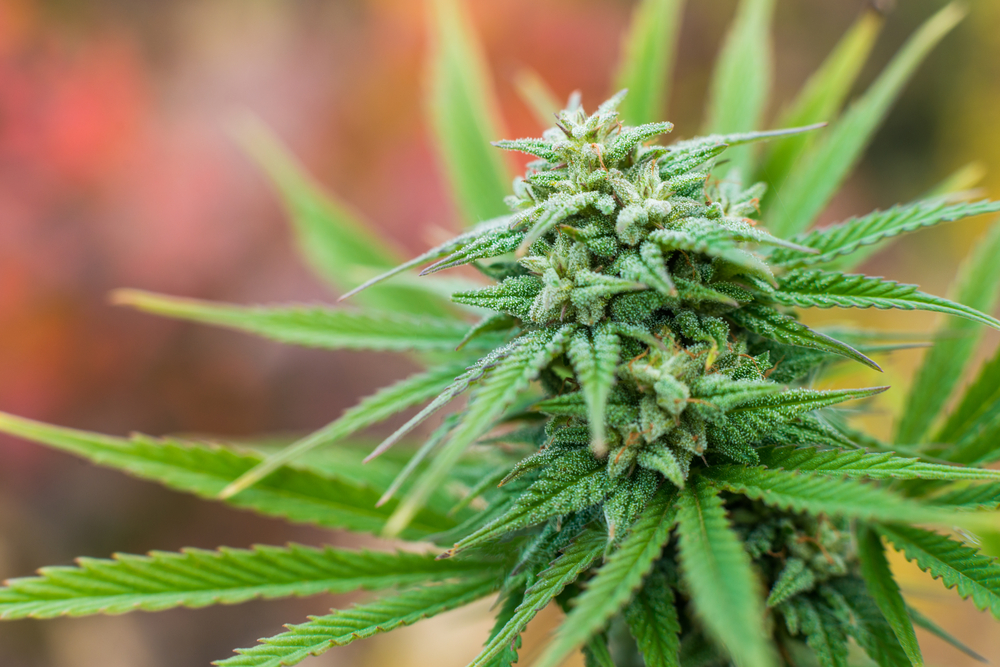In a national multicenter study investigating the safety of medical cannabis use by patients suffering from chronic pain, a research team led by Dr. Mark Ware from the McGill University Health Centre (MUHC) in Montreal, Canada has found that chronic pain patients who used cannabis daily for one year, when carefully monitored, had no increase in serious adverse events compared to pain patients who did not use cannabis. The study results, which have been published online in The Journal of Pain, will serve as a benchmark study on cannabis side effects of when used for pain management.
The Journal of Pain Open Access paper, entitled “Cannabis for the Management of Pain: Assessment of Safety Study (COMPASS)“ (The Journal of Pain, 2015; DOI: http://dx.doi.org/10.1016/j.jpain.2015.07.014), is coauthored by Mark A. Ware, MBBS MRCP MS, Tongtong Wang, BMed PhD, Stan Shapiro, PhD, Jean-Paul Collet, MD PhD, Aline Boulanger, MD, John M. Esdaile, MD, Allan Gordon, MD, Mary Lynch, MD, Dwight E. Moulin, MD, and Colleen OConnell, MD.
The coauthors note that Cannabis is widely used as a self-management strategy by patients with a wide range of symptoms and diseases including chronic noncancer pain, but the safety of cannabis use for medical purposes has not been systematically evaluated.
They conducted a prospective cohort study to describe safety issues among subjects with chronic noncancer pain, with a standardized herbal cannabis product containing a consistent 12.5% Tetrahydrocannabinol (THC) was dispensed to eligible subjects for a one-year period. Controls were subjects with chronic pain from the same clinics who were not cannabis users. The study’s primary outcome consisted of serious adverse events (SAEs) and non-serious adverse events (AEs). Secondary safety outcomes included pulmonary and neurocognitive function and standard hematology, biochemistry, renal, liver and endocrine function. Secondary efficacy parameters included pain and other symptoms, mood, and quality of life.
Beginning in 2004, 215 individuals with chronic pain were recruited to the cannabis group (141 current users and 58 ex-users) and 216 controls (persons with chronic pain but no current cannabis users) from seven clinics across Canada, located in Fredericton, New Brunswick; Halifax, Nova Scotia; London and Toronto,Ontario; Vancouver, British Columbia; and Montreal, Quebec (two sites). The median daily cannabis dose was 2.5g herbal cannabis per day from a licensed cannabis producer and dispensed through the hospital pharmacy at each site. Patient participants collected their supply every month after completing the necessary visits and tests, with medication delivered via smoking, vaporization, or as edibles. There was no difference in risk of SAEs between groups. Medical cannabis users were at increased risk of non-serious AEs (adjusted most of which were mild to moderate such as headache, nausea, dizziness, somnolence, and respiratory problems associated with smoking), and there were no differences in secondary safety assessments.
Based on the study findings, the researchers conclude that quality-controlled herbal cannabis, when used by cannabis-experienced patients as part of a monitored treatment program over one year, appears to have a reasonable safety profile, and that longer term monitoring for functional outcomes is needed The study was registered with http://www.controlled-trials.com (ISRCTN19449752).
 “This is the first and largest study of the long term safety of medical cannabis use by patients suffering from chronic pain ever conducted,” says lead author, Dr. Ware, pain specialist at the Montreal General Hospital of the MUHC and associate professor in Family Medicine and Anesthesia at McGill University, in a McGill release “We found that medical cannabis, when used by patients who are experienced users, and as part of a monitored treatment program for chronic pain over one year, appears to have a reasonable safety profile.”
“This is the first and largest study of the long term safety of medical cannabis use by patients suffering from chronic pain ever conducted,” says lead author, Dr. Ware, pain specialist at the Montreal General Hospital of the MUHC and associate professor in Family Medicine and Anesthesia at McGill University, in a McGill release “We found that medical cannabis, when used by patients who are experienced users, and as part of a monitored treatment program for chronic pain over one year, appears to have a reasonable safety profile.”
Along with information on adverse effects, subjects underwent lung function and cognitive testing, and were asked about their pain, mood and quality of life over the one year of follow up. Several of the subjects underwent complete panels of blood tests for routine biochemistry, liver and kidney function, and selected hormone levels.
“Our data show that daily cannabis users had no greater risk than non-users (control group) to experience serious adverse events,” says Dr. Ware, who is also a researcher for the Brain Repair and Integrative Neuroscience Program at the RI-MUHC. ”We found no evidence of harmful effects on cognitive function, or blood tests among cannabis consumers and we observed a significant improvement in their levels of pain, symptom distress, mood and quality of life compared to controls. ”
However, the researchers did report an increased risk of non-serious adverse events in medical cannabis consumers such as headache, nausea, dizziness, somnolence, and respiratory problems associated with smoking.
“It is important to note the limitations of the study,” adds Dr. Ware. “Patients were self-selected, not randomized, and most were experienced users. So what we are seeing is that it appears to be a relatively safe drug when used by people who have already determined that it helps them. We cannot draw conclusions about safety issues of new cannabis users.”
A previous study led by Dr.Ware published in 2010 in the journal CMAJ (Canadian Medical Association Journal), found that patients with chronic pain have reported using smoked cannabis to relieve pain, improve sleep and improve mood.
The study, entitled “Smoked cannabis for chronic neuropathic pain: a randomized controlled trial” (CMAJ October 5, 2010 vol. 182 no. 14 First published August 30, 2010, doi: 10.1503/cmaj.091414) is coauthored by Dr.Ware with Tongtong Wang, PhD, Stan Shapiro, PhD, Ann Robinson, RN, Thierry Ducruet, MSc, Thao Huynh, MD, Ann Gamsa, PhD, Gary J. Bennett, PhD, Jean-Paul Collet, MD PhD, variously of McGill University, Boreal Primum of Montral, Quebec.; and the University of British Columbia Centre for Applied Health Research and Evaluation in Vancouver, British Columbia.
The coauthors note that chronic neuropathic pain affects 1% to 2% of the adult population and is often resistant to standard pharmacologic treatment. Many patients with chronic pain have anecdotally reported better results using cannabis to relieve pain, improve sleep and improve mood.
Participants in the crossover trial (International Standard Randomised Controlled Trial Register no. ISRCTN68314063)
with post-traumatic or postsurgical neuropathic pain were randomly assigned to receive cannabis at four potencies (0%, 2.5%, 6% and 9.4% tetrahydrocannabinol) over four 14-day periods, and inhaled a single 25-mg dose through a pipe three times daily for the first five days in each cycle, followed by a nine-day washout period. Daily average pain intensity was measured using an 11-point numeric rating scale. The investigators recorded effects on mood, sleep and quality of life, as well as adverse events.
Twenty-three participants were recruited 23 (mean age 45.4), of whom 21 completed the trial. The average daily pain intensity, measured on the 11-point numeric rating scale, was lower on the prespecified primary contrast of 9.4% v. 0% tetrahydrocannabinol (THC) (5.4 v. 6.1, respectively Preparations with intermediate THC potency yielded intermediate but nonsignificant degrees of relief. Participants receiving 9.4% tetrahydrocannabinol reported improved ability to fall asleep faster, more drowsiness, and improved quality of sleep relative to controls receiving 0% tetrahydrocannabinol. THe investigators found no differences in mood or quality of life, and the most common drug-related adverse events during the period when participants received 9.4% tetrahydrocannabinol were headache, dry eyes, burning sensation in areas of neuropathic pain, dizziness, numbness and cough.
The researchers conclude that a single inhalation of 25 mg of 9.4% tetrahydrocannabinol herbal cannabis three times daily for five days reduced the intensity of pain, improved sleep and was well tolerated.
Sources:
McGill University Health Centre. Note
The Journal of Pain
CMAJ
Image Credit:
McGill University

